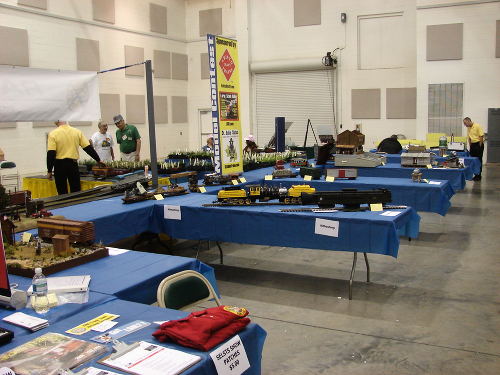
Model making in the railroad hobby has greatly changed from the very, very early days in O, S and HO scales when there were virtually no simple model kits or finished models that are available today. Then, a railroad car kit might consist of a pair of trucks and couplers, or just castings for them, a set of plans, and a bundle of raw materials with a few castings and perhaps a single sheet of crude plans.
If you were making a passenger car with rounded roof ends, you got a block of wood with instructions on where to carve and sand out the corners with a knife and sandpaper. Today these would be called craftsman kits and few very are sold, especially in G-gauges.
When Athearn and Model Die Casting came out with easy HO kits that you could put together very quickly, a lot of people got more interested in modeling. When structures started coming out in easy to assemble plastic kits rather than wood kits that were mostly bundles of strip wood, again the hobby manufacturers were successful in getting hobbyists interested in modeling.
Today in the model railroading hobby and in G-gauge large scale in particular, there is a decrease in the percentage of people that actually do the model making that was necessary in the past. Many items now come ready to run or ready to set in place to make a scene and this is a perfectly acceptable way to enjoy the hobby. Some people enjoy seeing their trains run, some want to operate and some want to be deeply involved in making the trains and structure models into a detailed scene or presentation.
While the percentage of modelers wanting to actually build models is a small portion of the overall Large Scale community, their work stands out and is admired by everyone in the hobby. Some of us just enjoy making things, so making models comes naturally.
Would you enter a contest?
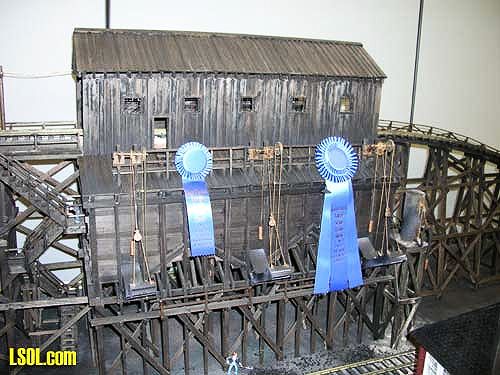
Why do you think that at a train show or convention, with so many railroad modelers attending, there are often so few entries in model contests? Some categories may even have only one or two entries. Is it fear of critical critique? Perhaps it is not willing to be judged as anything other than 1st place. Winning a ribbon because a panel of your peers judged your work to stand out is rewarding and if you are one of the top winners of the show, the prize is also nice.
But what is more important is that most people stop by the contest tables to admire your work; doing so without any judgment of whose is best. They just want to see what can be done with Large Scale trains and may be inspired to try it themselves after seeing the models displayed. It is an opportunity for them to see railroad items beyond the out of the box offerings of the dealers with their shiny new models on display. During a show, there are a lot of photos taken of models displayed on the contest tables and far fewer of vendor's displays.
So perhaps the contest should be considered a model show rather than a contest, and simply a venue to display your work.
Level the playing field.
Not all modeling requires the same effort to achieve a great looking unique model. With good painting or weathering application on a model, you could have an out of the box, a kit-bashed or scratch built model of the same prototype come out looking fairly similar to each other so that from a casual glance, many people would not be able to tell the difference.
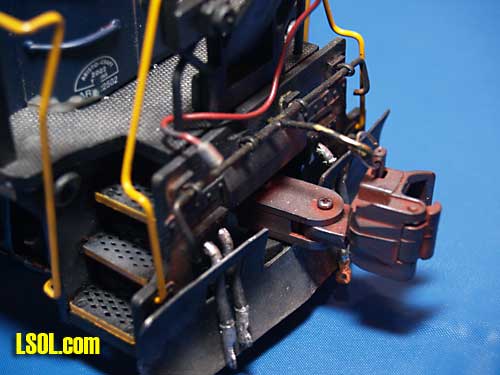
Today some out of the box models are available with so much detail that simply decaling and weathering can result in a show piece model of a well worn locomotive on a small branchline. But with so little effort, is that really contest modeling? After spending 50 hours scratch-building a locomotive, or 25 hours kit-bashing a few kits together to make a different locomotive, should that model be judged against a purchased highly detailed locomotive that was simply weathered or had few additional minor details added?
In a model contest, it is the effort put into the model and the end result that are taken into consideration by the panel of judges. In such a contest, scratch building, kitbashing and detailing are all different skill levels and are usually judged separately.
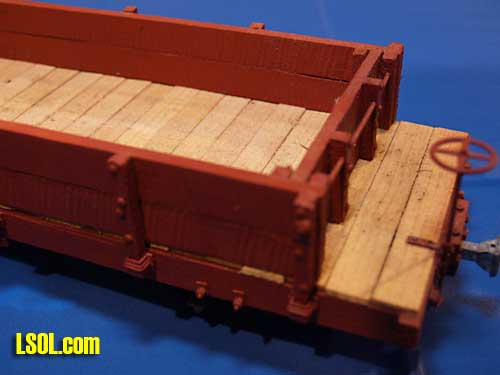
Scratch-building is using raw stock material and fabricating a piece of equipment. This is done working with raw materials like strip wood, vinyl, metal and/or rough castings, and these models take a lot of work. Commercial plans, manufactured castings, wheel sets and couplers can be used for scratch-building.
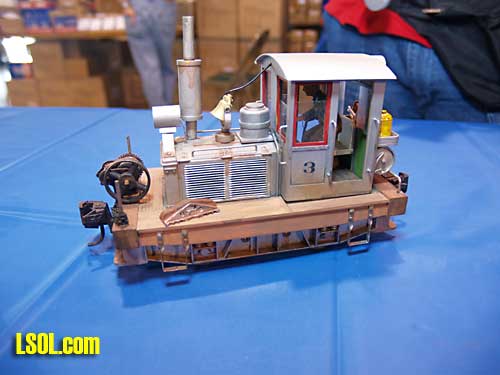
Kit-bashed is taking parts from a kit or various kits, cutting or combining the parts to fabricate a different model than the original kit was intended to model. This is most often done to get a locomotive or structure that is not commercially available. Using another model or kit as the source of the model can produce very realistic results without having to start from scratch.
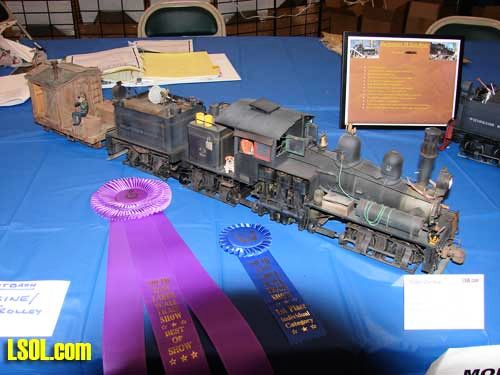
Detailing is simply finishing an existing model to alter, improve or personalize its looks. This can be done by adding extra detail parts such as a casting. This could be a detail that was left off the original product or a part that only the railroad you model uses. It can also be painting and weathering the product so that you have a slightly different model that may be more prototypical than when it came out of the box. Detailing is not a category found in every model contest. Best
The typical categories found in most railroad model contests are locomotives or motive power, rolling stock, structures and dioramas.
Locomotives or motive power include any model that is powered such a locomotive, interurban, trolley or RDC car.
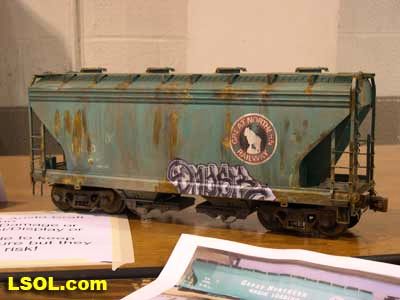
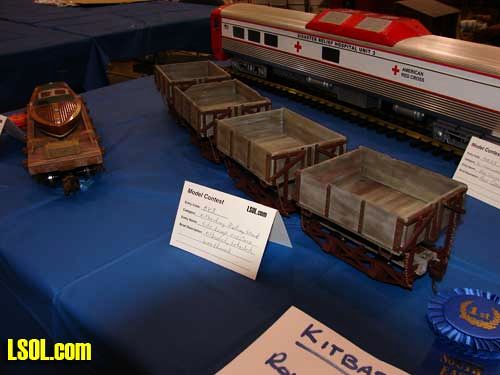
Rolling stock includes all nature of non-powered railroad cars.
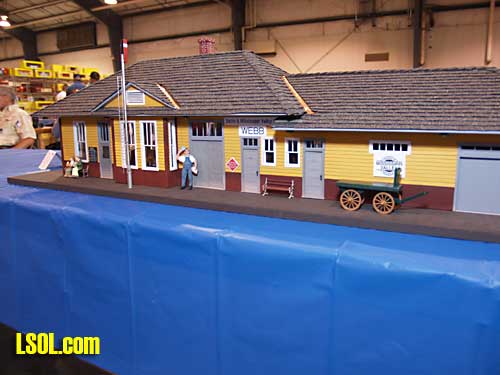
Structures include railroad, commercial or private buildings, bridges and trestles found on or near a railroad.
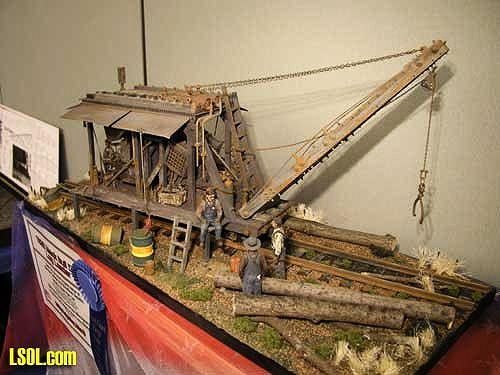
Dioramas are normally railroad scenes made up of a combination of items from multiple categories where the included items may also include a variety of scratch-built and commercially available details in the same scene. This category could easily include items from all levels of modeling in all categories, so judging is done in this distinctive category of dioramas.
An interesting point often overlooked; if you combine too many details to a model it may move from a single category such as structure into a diorama.
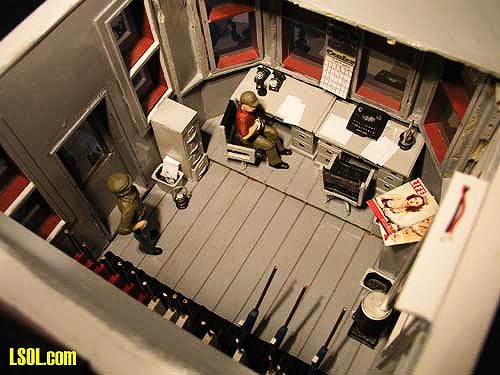
If you detail the interior of a structure, it would still be considered a structure. However if you add figures inside and out and scenery details around the structure mounted on a base or maybe a train car unloading, you have created the basis for a diorama, not a single model. The destiction can be that a diorama is trying to tell a whole story versus an entry painting a single picture of the item entered.
Some contests allow for a miscellaneous category, which is for models like a steam donkey or automobiles that are a real part of railroading but do not fall into a specific railroad category.
The curious category of whimsical is an offspring of any of the basic categories for a model usually representing a non-prototypical theme. The work required to make an item cute and whimsical may take as much effort to make as it takes to make a prototypical model. Smaller scales tend to have less whimsical models than those found in Large Scale model contests.
So what makes the best models for a contest?
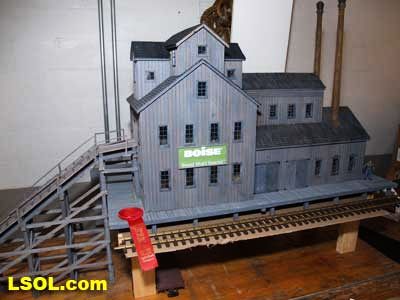
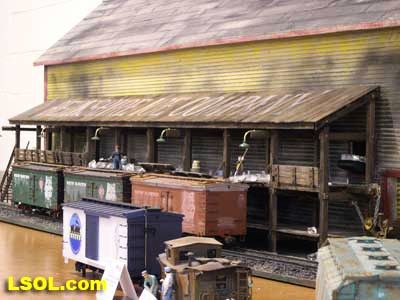
Basically a model that catches your eye and holds your attention past a quick glance is a model that has a good chance of being a winner. If little details jump out as the observer looks over the model, it will hold his/her interest much longer.
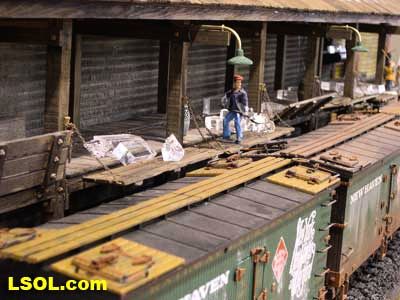
If a model can tell a story by looking at the details and finish, it has achieved its goal. Something rather new in modeling is the inclusion of lighting and animation on dioramas. This seems to work best if it is a subtle addition and not the overwhelming premise of the model.
What do judges look for?
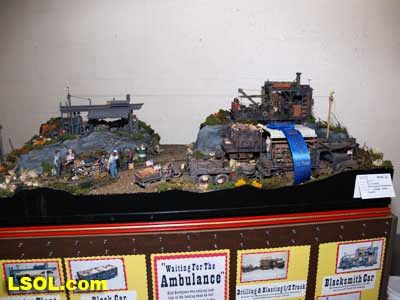
Most models are judged on their own merits and not simply compared to other models in the same category. There have been third place ribbons awarded to the only model in a category when judges felt it was simply not 1st place quality work.
It does not take too long to determine how much effort went into a model and to tell if it is a finished product or work in progress.
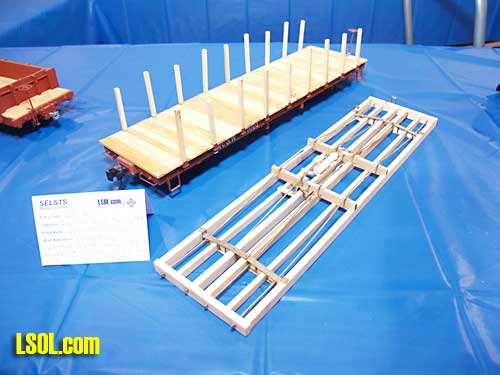
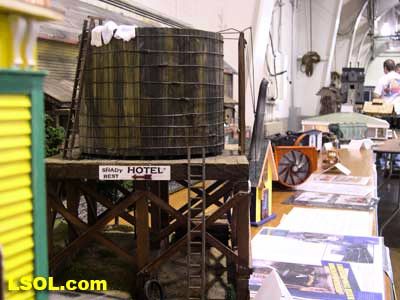
Judges tend to look at the degree of workmanship and finish to obtain an overall impression. In contest modeling, accurate scale counts, even in G-gauge, if you want to have a superior ranking. Having appropriate detail also counts. Creating a scene that suggests it is set in the 1950's and adding a single detail from the year 2000 detracts from the desired effect. The same would be true if you have a 1/20.3 scale 3' narrow gauge loco with 1:32 scale fireman and engineer.
And yes, one can over-do it with too much weathering or even too many details that don't really fit in. With the substantial monetary awards now available in the LSOL.com model contests at each of the big Large Scale shows, it is time you considered showing off your work in these contests. Even if you don't win a prize, the satisfaction of watching people look at and talk about your model is very rewarding. Each time you create a model you improve your skills and each time you share it with others in a contest, you motivate others to try their hands at discovering the satisfaction of creating something. The many past winners in the LSOL.com model contests have been people who were new to Large Scale, model railroading and modeling. So why not try your hand at adding to the pleasure found in Large Scale trains by starting with something simple.
If you look at the entries in the LSOL.com contests, you will see that some of the models were very simple. Start with weathering or building a small structure or car. Before you know it you will be building or modifying many of the things you need for your railroad.
| Models |
| Guys, Terrific article. As a kitbasher and scratch builder, I would enter a contest, but it wouldn't bother me if I got a ribbon or not. The opportunity to just show off my work would be enough for me. Some of your detailed models and dioramas are amamzing. During this construction of my replica Kister Mill I have often wonderd just how detailed I should get. I could see myself making another one of wood and putting all the intricate details of the inner workings of the mill with cut away views to show how the mill worked. It could be used to keep our history alive. I guess a question a model maker needs to ask some questions. "Do I build it for the outdoors after the contest or just build it for the show?" "If it's for the show only then where will it go once it's returned home?" |
| Gary Condry - 03/09/2011 - 05:44 |
| Show Model Makers |
| Having participated in the model contests for several years (when they were in Perry, GA)I can attest to the thrill derived from such an endeavor. I didn't do it for the ribbon either, but receiving one was also an added bonus.. Mostly I did it so people in the hobby could see what I find pleasureable and perhaps entice others to join in the fun. Most of my entries were in the "vignette or diarama" category.. Added bonus for me was they were sold before leaving the convention. So it was great to find new homes as well. Elaine |
| Elaine Haggenbottom - 03/09/2011 - 07:39 |
| Modeling |
| I too have entered the model contests, and its nice to bring home a blue or red ribbon. But its just fun seeing people look at my creation, and seeing the looks on their faces. I build "running models" so I don't go into all the fussy little details that would just end up getting knocked off. I build my models for me, but I enter them in the contests to share with others. If I inspire one person to reach out and try something new then it was worth bringing a creation to the contest, win or not. By comparing what I have done with what others have done it shows me where I could improve. The contest is a treasure trove of ideas and inspiration. So why not do your your best and bring it to a contest, winning is nice, but the comments and suggestions from other modelers is the best part. |
| David A. Maynard - 03/09/2011 - 15:56 |
| Modeling |
| I used to enter contest in the St. Louis area when I had an indoor HO layout. But like David any thing I create or kitbash or detail is for outdoor running now and like Gary said which way would you go, built to last in the elements or look great in an indoor enviroment for the contest showing? I find that the 5 foot above viewlng rule applies more and more. |
| Ron Selliers - 03/09/2011 - 19:18 |
| Modeling |
| Having entered several contest at the SELSTS, I find the excitment is in learning from others on how they built this or that, did this or that and what company did you purchase that item from. Some of the best things I brought home from a train show is knowledge. A little time and conversation can be priceless! |
| Ron Hill - 03/09/2011 - 19:35 |
Top of Page



